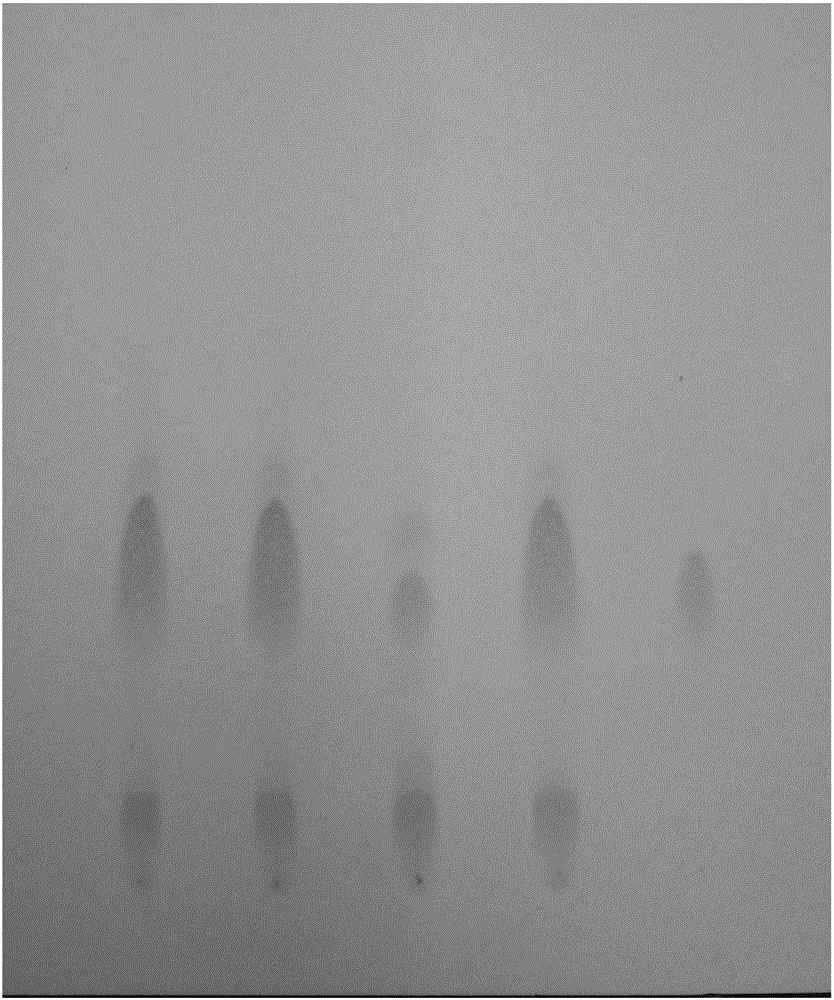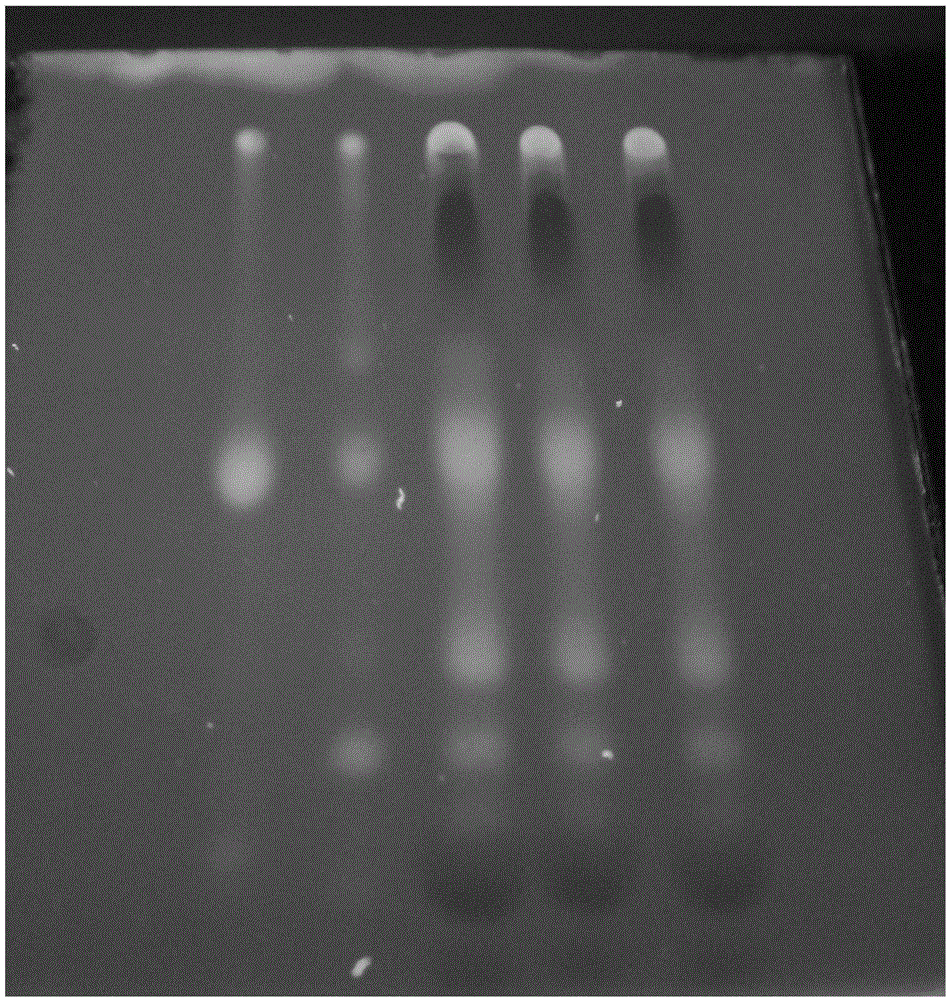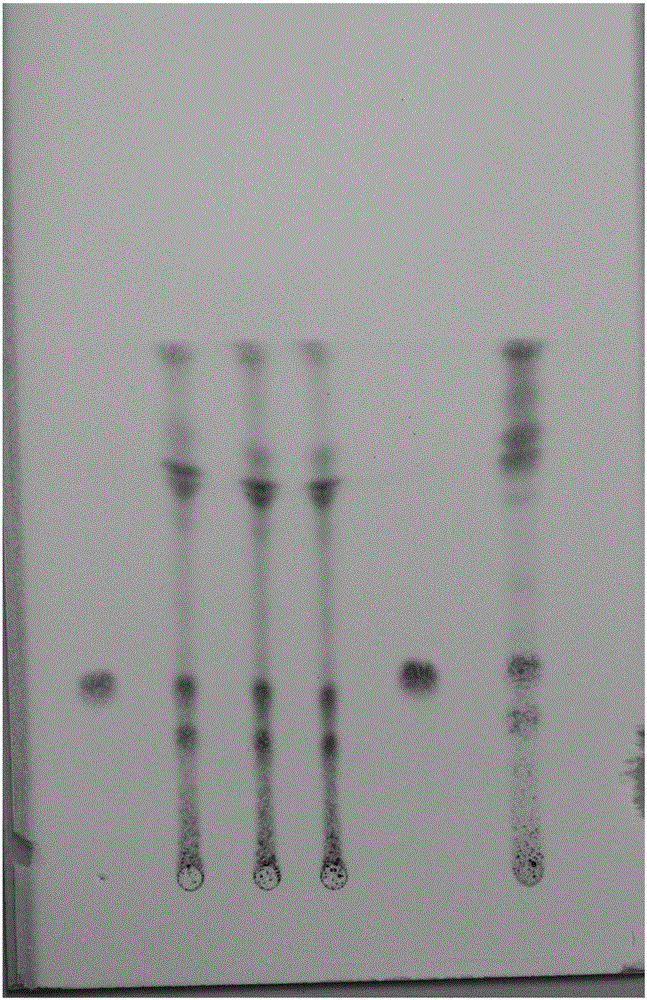Preparation method of compound Lonicera japonica granules
A technology of compound honeysuckle and honeysuckle, which is applied to medical preparations, pharmaceutical formulations, plant raw materials and other directions containing active ingredients, can solve problems such as no trial verification, and achieve the effects of overcoming the loss of active ingredients, improving solubility, and improving stability.
- Summary
- Abstract
- Description
- Claims
- Application Information
AI Technical Summary
Problems solved by technology
Method used
Image
Examples
Embodiment 1
[0053] The preparation method of compound honeysuckle granules comprises the following process steps:
[0054] a, material preparation: respectively select, clean, cut and dry honeysuckle, forsythia and scutellaria baicalensis;
[0055] B, water extraction: the processed honeysuckle in step a is distilled with water, the distillate is collected, and the honeysuckle aqueous solution after distillation is centrifugally filtered at a high speed, the dregs of the honeysuckle after distillation are decocted with water and then centrifugally filtered at a high speed, and the filtrate is combined twice to reduce Press and concentrate to make the first honeysuckle thick paste with a relative density of 1.1-1.2; decoct the forsythia and scutellaria baicalensis treated in step a twice with water, combine the decoction and high-speed centrifugal filter, and concentrate the filtrate under reduced pressure to make a relative density The first forsythia scutellaria baicalensis mixed thick p...
Embodiment 2
[0068] The difference between this embodiment and embodiment 1 is:
[0069] The conditions for concentration under reduced pressure in step b are: temperature 80° C., pressure 0.05 MPa, and concentration time 24 hours.
[0070] The conditions for high-speed centrifugation in step b are: the rotation speed is 15,000 rpm, and the time is 10 minutes.
[0071] The conditions for concentration under reduced pressure in step c are: temperature 60° C., pressure 0.08 MPa, and time 24 hours.
[0072] The vacuum drying in the step d preferably adopts a vacuum belt dryer, and the process parameters of the belt dryer vacuum drying in the step d are: pressure 0.005 MPa, temperature 45 ° C, time 30 minutes, feed rate 83 kg / hours, the crawler speed is 3 cm / min.
[0073] All the other contents are the same as in Example 1.
Embodiment 3
[0075] The difference between this embodiment and embodiment 1 is:
[0076] The conditions for concentration under reduced pressure in step b are: temperature 70° C., pressure 0.04 MPa, and concentration time 36 hours.
[0077] The conditions for high-speed centrifugation in step b are: the rotation speed is 13000 rpm, and the time is 15 minutes.
[0078] The conditions for concentration under reduced pressure in step c are: temperature 58° C., pressure 0.04 MPa, and time 27 hours.
[0079] The vacuum drying in the step d preferably adopts a vacuum belt dryer, and the process parameters of the belt dryer vacuum drying in the step d are: pressure 0.003 MPa, temperature 42 ° C, time 45 minutes, feed rate 82 kg / hour, the crawler speed is 7 cm / min.
[0080] All the other contents are the same as in Example 1.
PUM
 Login to View More
Login to View More Abstract
Description
Claims
Application Information
 Login to View More
Login to View More - R&D
- Intellectual Property
- Life Sciences
- Materials
- Tech Scout
- Unparalleled Data Quality
- Higher Quality Content
- 60% Fewer Hallucinations
Browse by: Latest US Patents, China's latest patents, Technical Efficacy Thesaurus, Application Domain, Technology Topic, Popular Technical Reports.
© 2025 PatSnap. All rights reserved.Legal|Privacy policy|Modern Slavery Act Transparency Statement|Sitemap|About US| Contact US: help@patsnap.com



